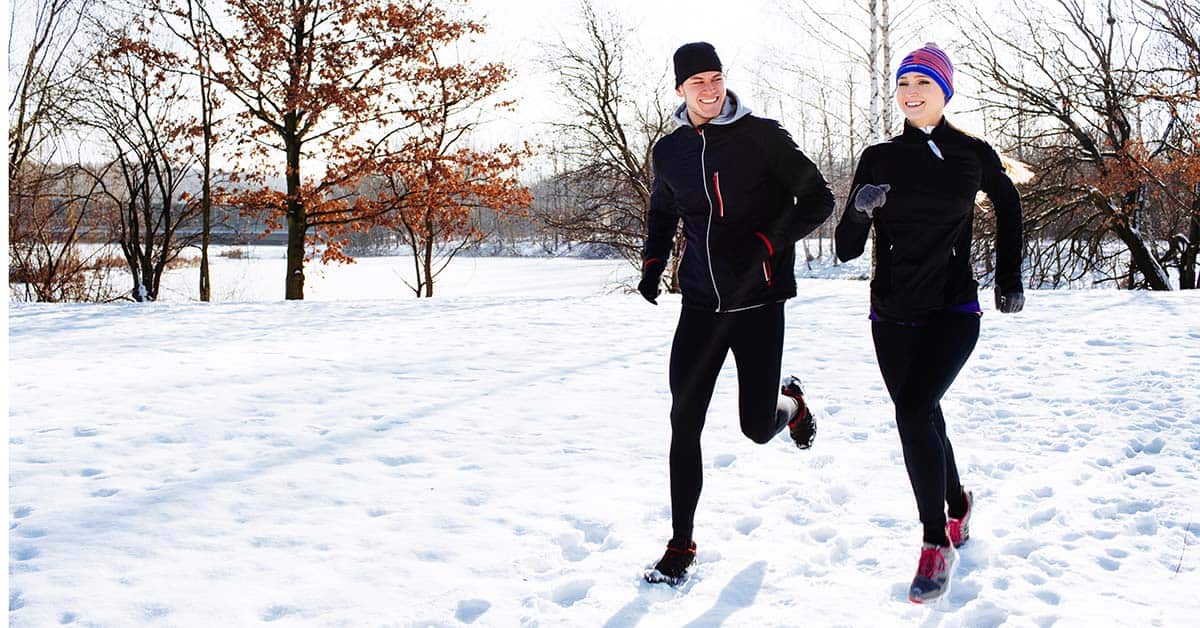How to Run in the Snow
Winter training can be challenging, especially with shorter, darker days and colder temperatures that make you think twice about going outdoors. In many parts of the country, winter weather includes snowstorms and snow/ice cover that may persist for a few months. While it may be intimidating at first, running in the snow is feasible (and even enjoyable) as long as you are prepared.
Here are several tips to help you stay safe and comfortable during a snowy run:
Check the weather first.
Before heading out for a winter run, check your local temperature and wind chill forecast. According to the National Weather Service, frostbite can happen quickly (in as little as five minutes) during below-freezing temperatures and strong winds. Checking these factors before your run will help you to dress appropriately.
Use your trail shoes.
Traction and weatherproofing on your footwear are essential for snow runs (especially for snow-covered ice). Trail running shoes feature lug soles with thicker treads, and many are also waterproof or offer extra weather protection around the footbed. It’s a bonus if your trail shoes have reflective details for added safety on dark winter days.
Dress in layers.
Dressing for the cold can be tricky and depends to some extent on your tolerance for the cold. Overall, the best strategy is to layer, enabling you to remove or add clothes as needed. Start with a lightweight and wicking base layer, add a midlayer depending on the temperature and your cold tolerance, and finish with a waterproof outer shell. For all layers, avoid cotton as it gets heavy and cold when wet. Remember to wear thick, wicking socks and bring gloves and a hat or headband to keep your extremities warm. If you’re running on a sunny day, don’t forget sunglasses to help combat extra glare from the snow-covered ground. Finally, consider adding a lightweight safety vest or a Petzl Tikka Headlamp for visibility on dark and stormy runs.
Prepare for the terrain.
Running in an urban environment can be tricky in the snow, as fresh snowfall can cover compacted layers of ice on sidewalks and streets. Snow provides more traction than ice, so you may want to plan out your route to maximize your time on fresh snow and avoid poorly shoveled sidewalks and streets. You may also want to consider using trails as grass or dirt will stay warmer than concrete and, therefore, less likely to be covered in ice.
Shorten your stride.
Minor adjustments to your stride can make a big difference in your comfort level while running in the snow. Shorter strides primarily will help with stability and balance on slippery surfaces. Taking smaller and more intentional steps will also slow your pace and allow you to notice and avoid icy patches. Remember that changing your stride and using more stabilizing muscles during your run may lead to increased post-run soreness.
Drink water.
It’s a good rule of thumb to drink as much water on a winter run as you would in the summer. You may have to be mindful about increasing your fluid intake as you will likely feel less thirsty during a winter run. Remember to bring water with you for longer runs and fuel or supplements.
Know when it’s too cold.
There may be winter days where running outdoors is not safe. Accept that you may still have to use a treadmill or cross-train indoors at times until a snowstorm passes or temperatures increase. However, running in the snow can be a safe and enjoyable experience with the proper preparation.
A Training Plan that Works for You.
Our collection of running plans will help you train year-round. From 5k to a 100-mile ultramarathon, we have a training plan built for your experience level and goals. Every plan is delivered via Final Surge, allowing you to sync workouts across devices, receive daily reminders of workouts and activities, and analyze workout and target zone details. Get started today with a training plan built for you, view our running plans here.










